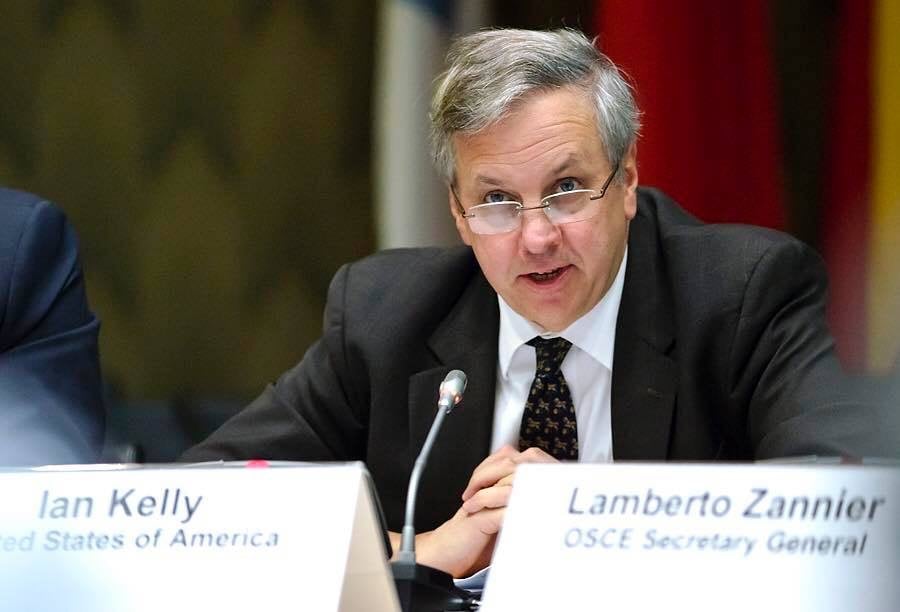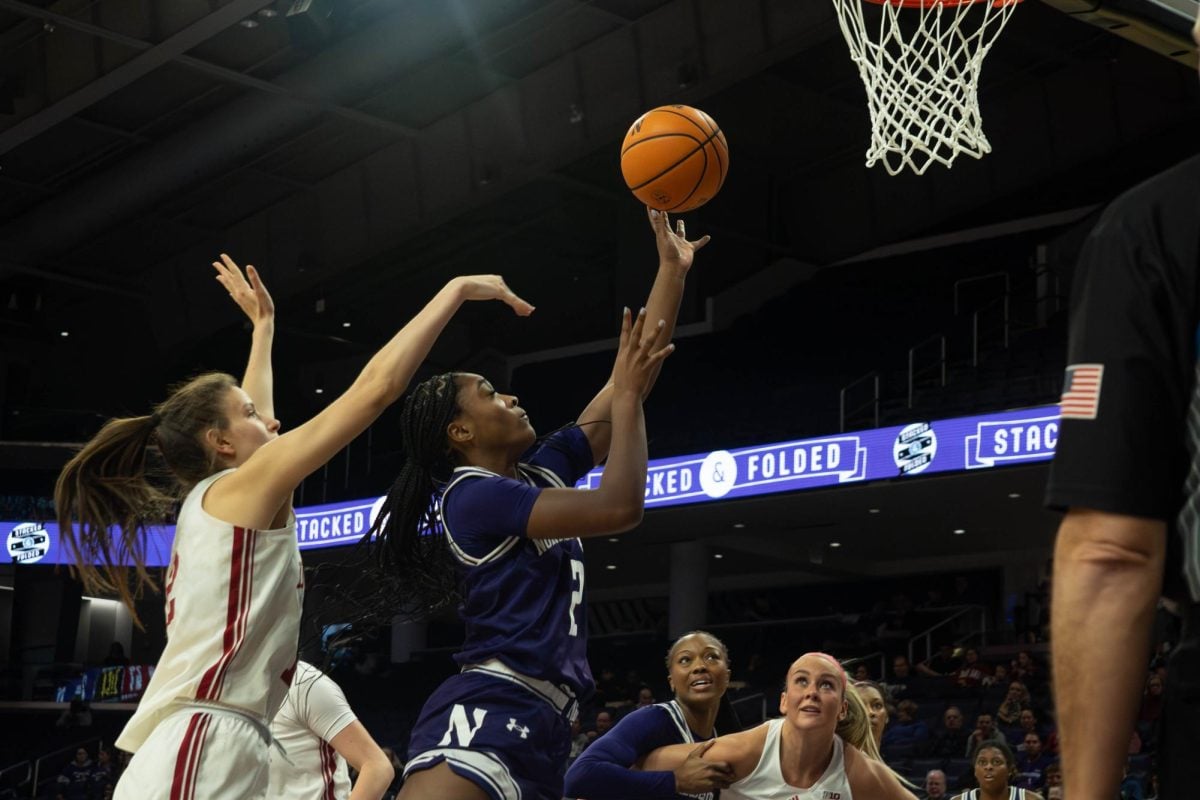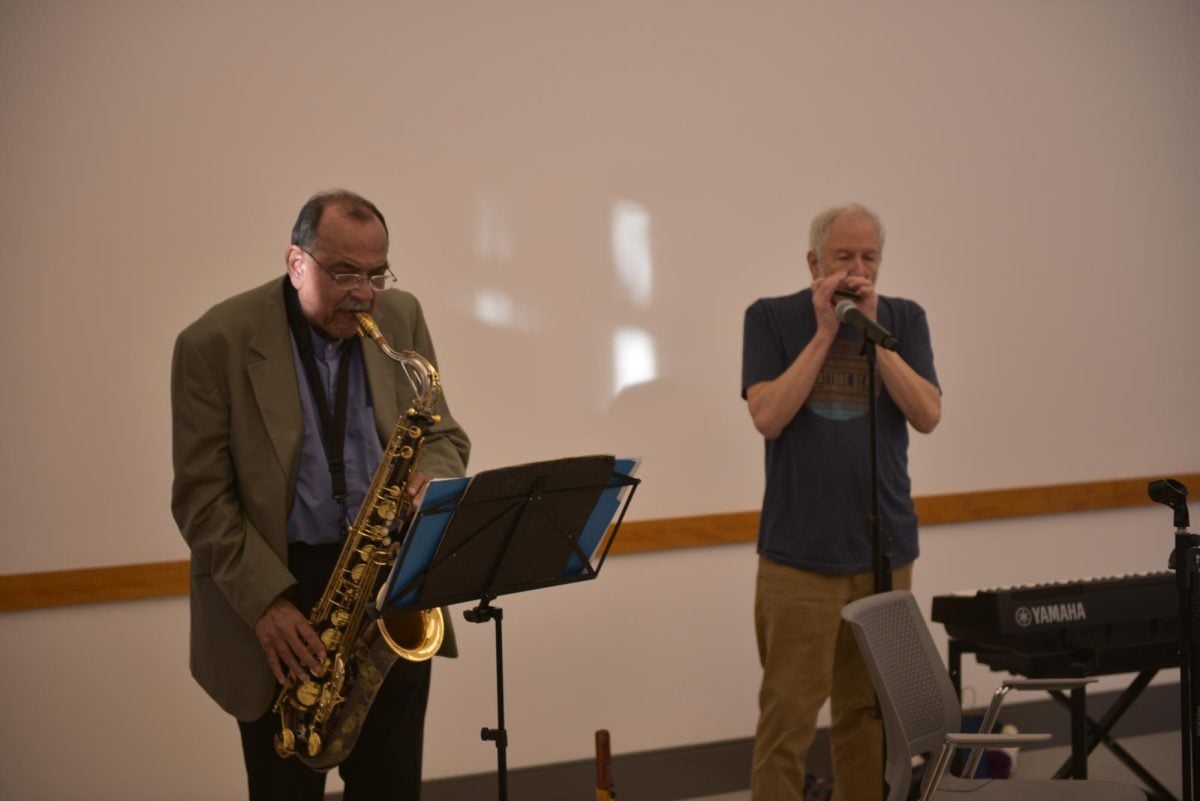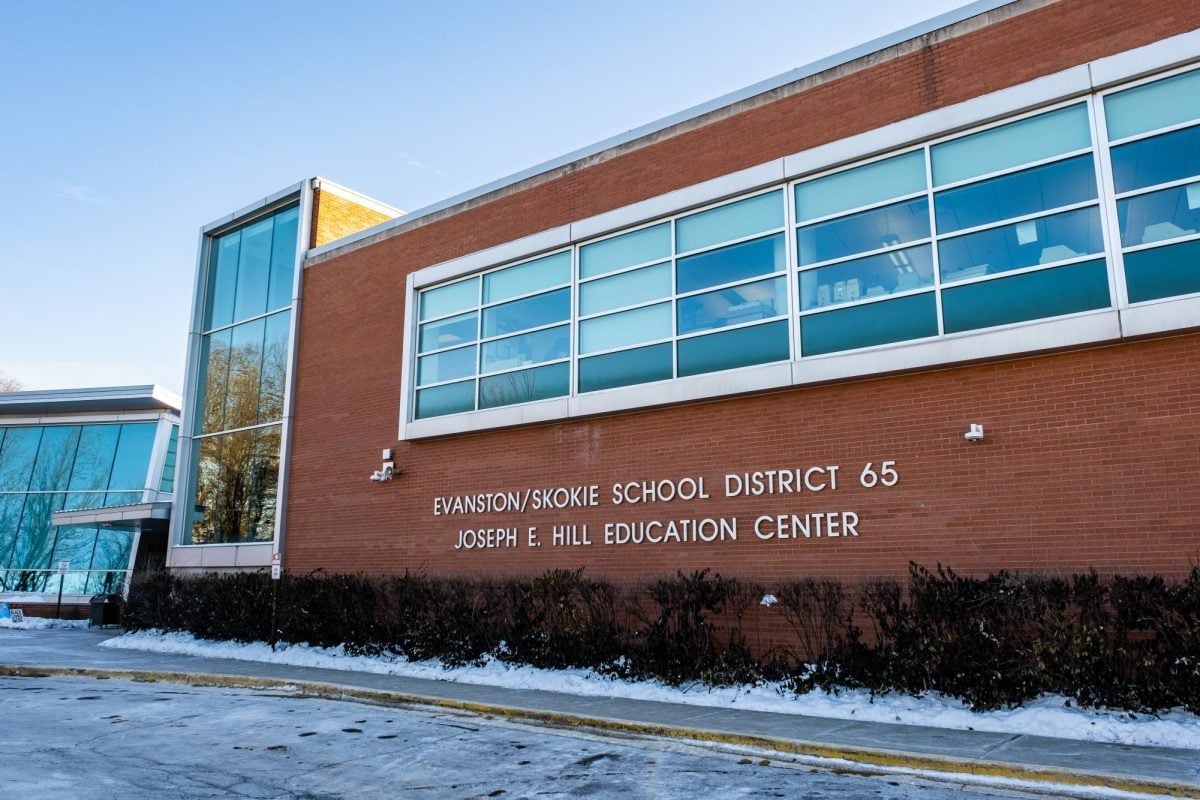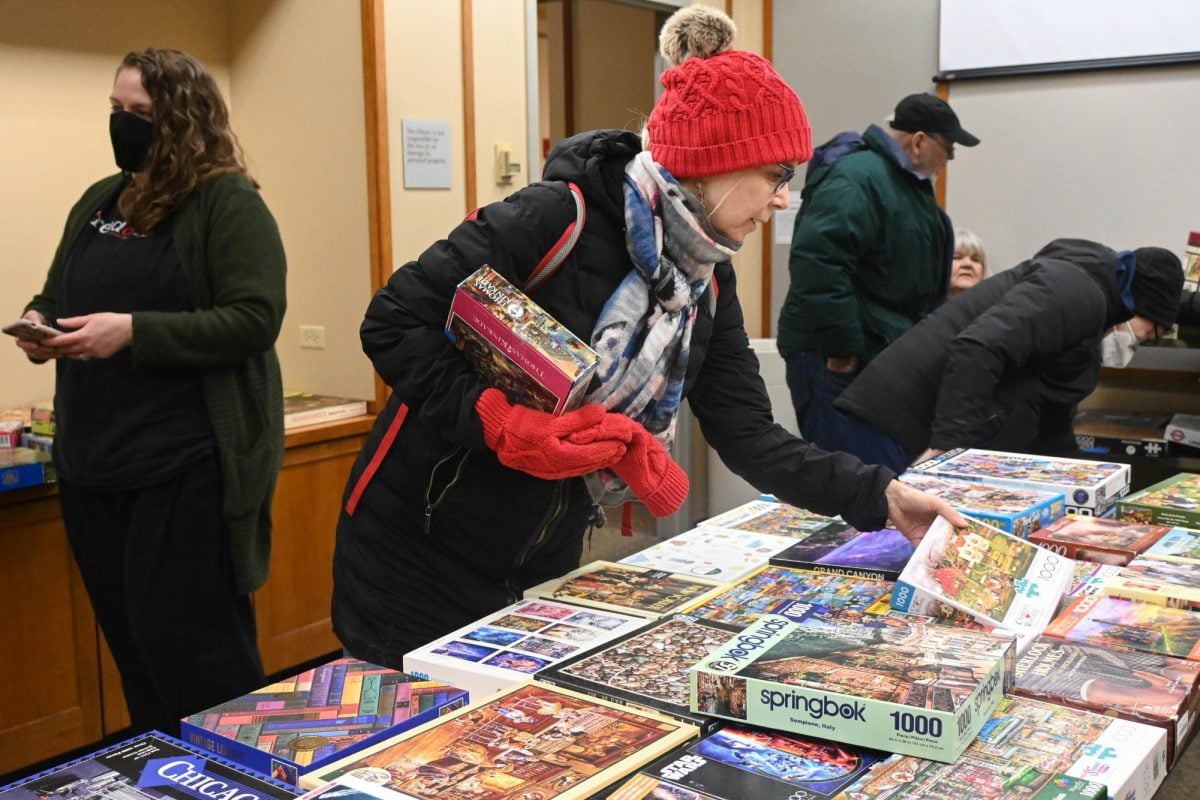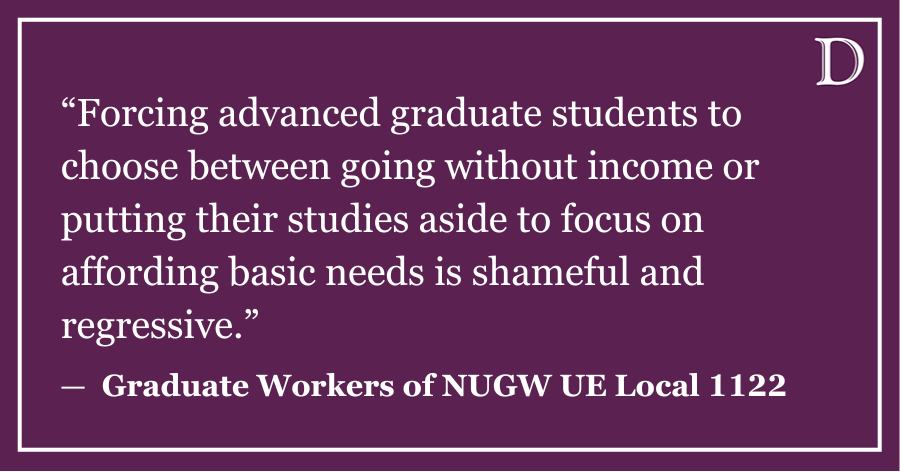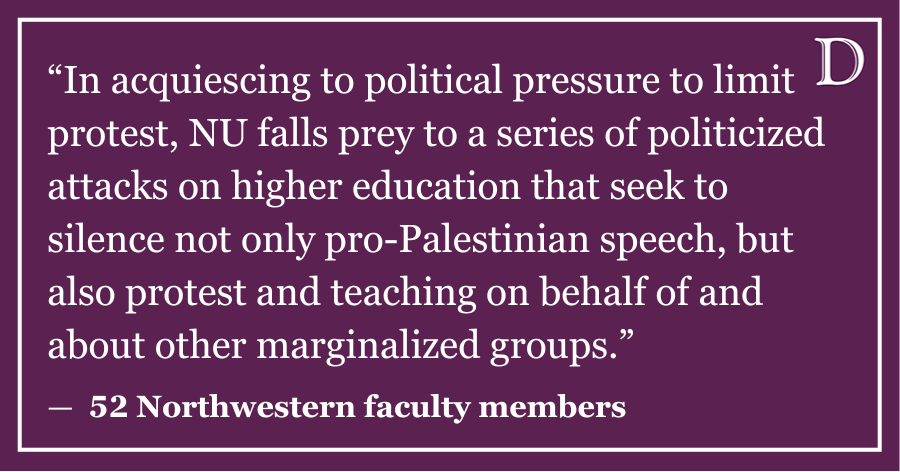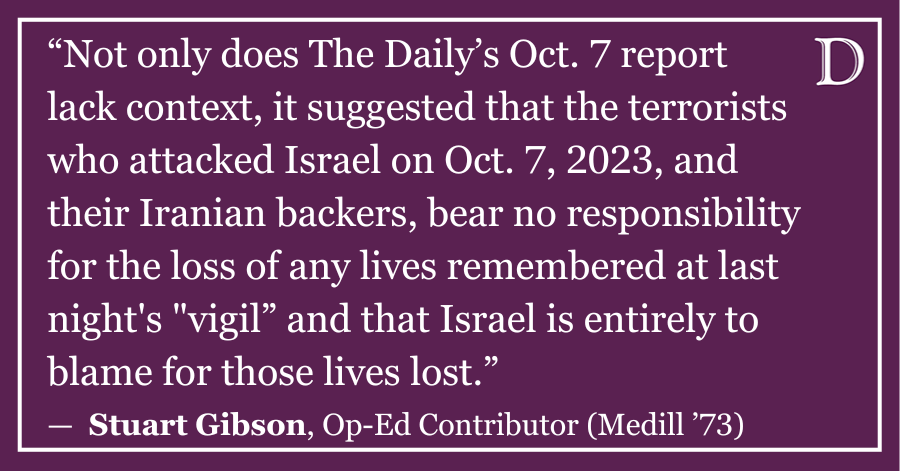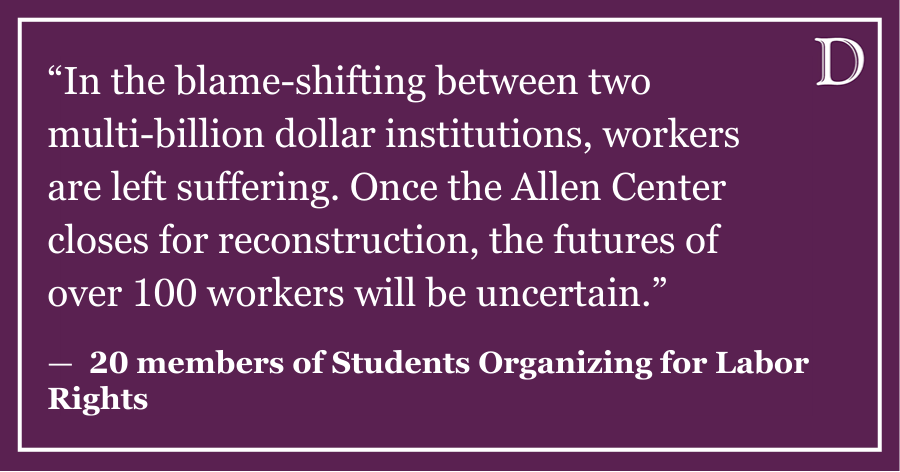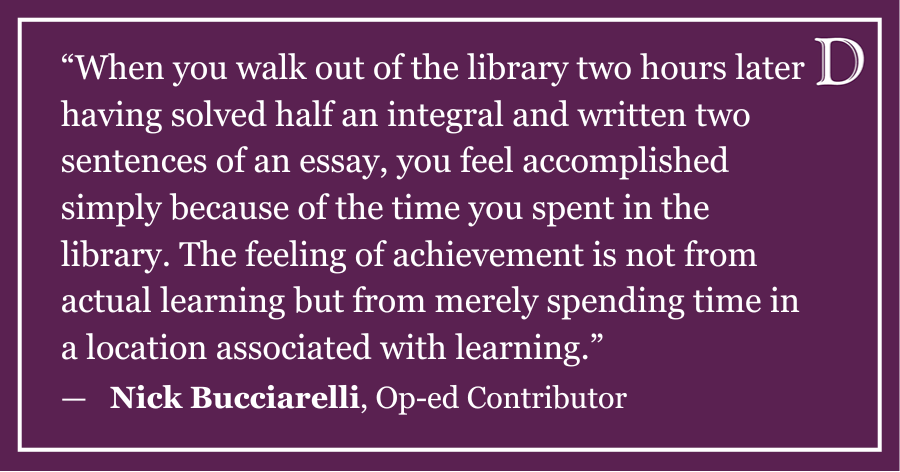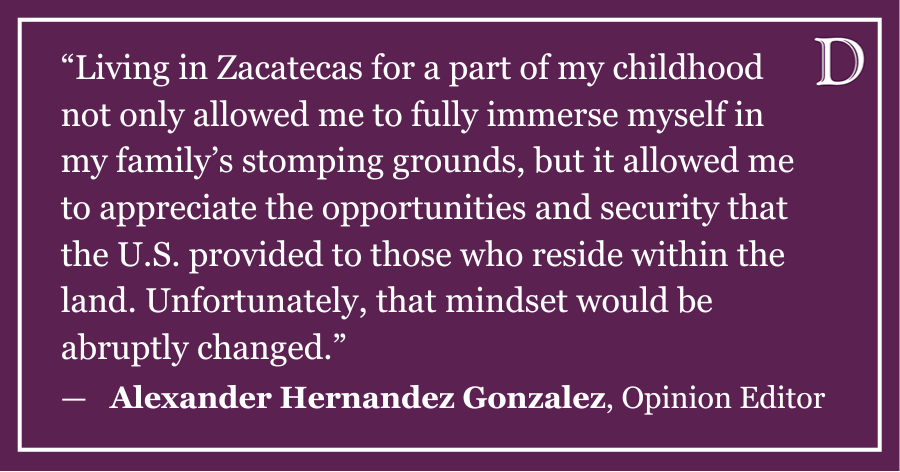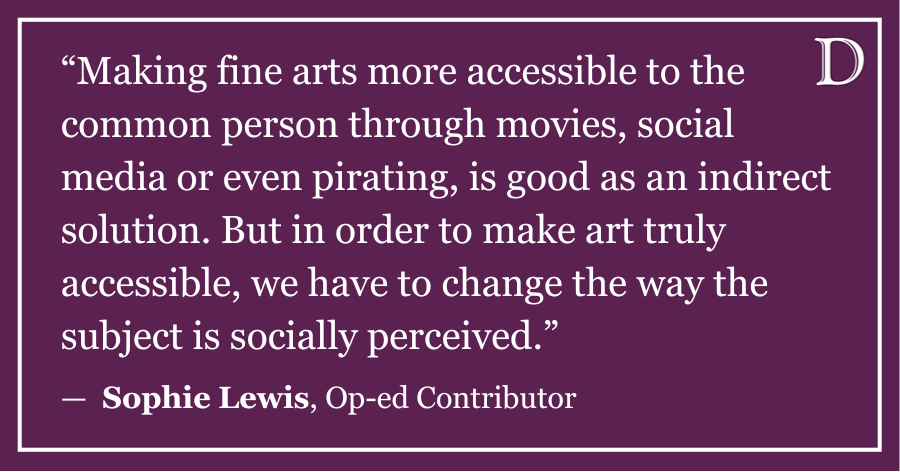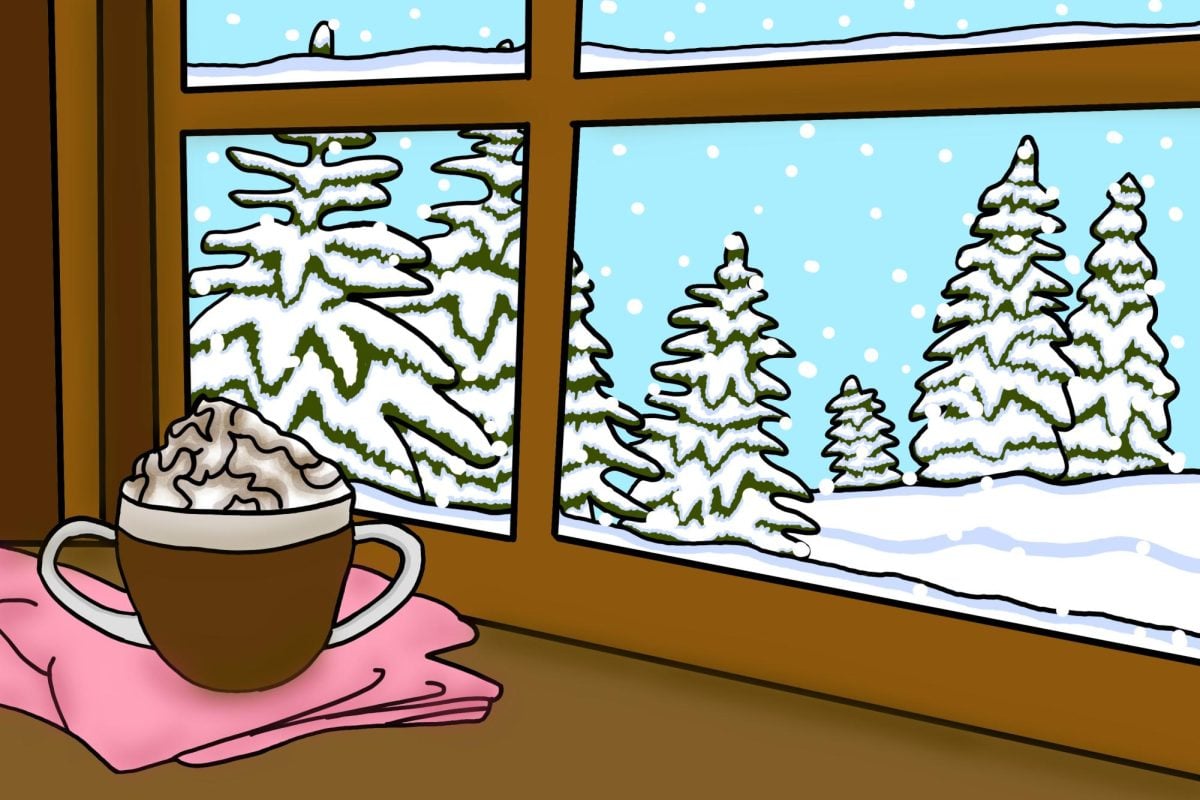Sophie Lewis made many strong and valuable points in her opinion column “No one mourns the Broadway version: ‘Wicked’ and theatre accessibility.” Yes, there is something about live theatre that cinema just can’t replicate.
However, I was somewhat taken aback by her comment: “Rural America looks barren and gray, occasionally speckled with the golden arches, while small towns in Sweden maintain their traditional, although maybe more laborsome, architectural styles.”
Having grown up in a town with 1,600 people in rural Montana, attended college in a town with 5,000 in Nebraska and having a brother who lives in a town of 8,500 in Montana (a metropolis in that area), I find the comment very ignorant. She needs a field trip where she takes time to really look at rural America — and for heaven’s sake get off the interstate where you can only see the Golden Arches.
Lewis’ reference to Sweden does not take into account the fact that rural America is not rural Sweden. For one thing, architecture in the western United States is largely post-Civil War, when non-indigenous settlement started to pick up.
On a day-to-day basis in my community, the band director was one of the big personalities in town, and at least half the town showed up to watch the grade school Christmas pageant and the grade school band and choir concert.
The town’s big feature in the spring was the jazz concert and art show. A majority of the reason the town showed up was for their loved ones in the act, but the performances were also entertaining.
If the town wanted a play, a group just rented the stage and had a play. While it wasn’t a big Chicago theatre, the shows were solid, especially when the actors taught in the local school or church or worked at the real estate office.
The high school put on its play annually with well-acted performances, both dramatic and comedic, that I remember fondly to this day. Additionally, I grew up 80 miles away from Billings, Montana, where most of the traveling Broadway shows made their way through (the comparison of Chicago miles to Montana miles is another topic).
We have professional artists and sculptors. Someone, usually the high school, was occasionally able to bring a traveling performance to town. In smaller college communities (I once saw James Earl Jones talk, for instance), the institutions can attract bigger names and the college performing acts, which are also a joy to listen to.
And let’s talk about art. The first thing that popped into my head when I read Lewis’ line about a gray rural America is the murals. I recommend the book “Nebraska’s Post Office Murals: Born of the Depression, Fostered by the New Deal” by L. Robert Puschendorf.
However, when you drive around Nebraska, and much of rural America, you will see murals and paintings everywhere. If you like architecture, check out the county courthouses. And although ‘historic’ has a different meaning in the western U.S., there are historic homes.
Closer to Chicago, I recommend taking the drive to Quincy, Illinois. Nauvoo, Illinois, has interesting architecture and a beautiful sculpture garden, and there are places with more well-known artwork — the enchanted highway in North Dakota featuring several large metal sculptures and St. Anthony of Padua Catholic Church in Hoven, South Dakota. They wanted a cathedral, so they built one.
One final point: in rural America, beauty is where you choose to see it. The two-picture windows of the house I grew up in contained two Hollywood-background-worthy mountain ranges. I was surrounded by rivers, waterfalls and other traditional scenes that could fill tourism commercials.
I also appreciate the high plains of Montana, the Sandhills of Nebraska and the openness of North Dakota. Cornfields, sunflower fields, the lakes of northern Minnesota, Michigan’s upper peninsula, the smaller communities around the Great Lakes are all places I have found beauty in. People from those areas can be very attached to their beauty. I have seen enough of this country to appreciate it.
I think one challenge this country is facing right now is that people regionally choose not to take the time to understand the completely different culture found in other parts of the country. On my last train trip back to Nebraska, a woman from New England admitted that she had no concept of what Nebraska was and it had always been a flyover state to her.
Lewis’ comment reflects this lack of understanding. We need to start by asking questions, especially when it comes to Lewis’ comment: “Where is art in rural America” and “What does art look like in rural America.” I assure you, it is there. It is only “barren and gray” if you choose to see it that way.
Kathy Alonso is a resident in Evanston, Illinois. If you would like to respond publicly to this op-ed, send a Letter to the Editor to [email protected]. The views expressed in this piece do not necessarily reflect the views of all staff members of The Daily Northwestern.
